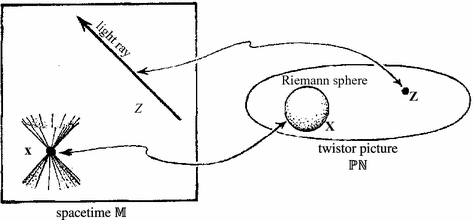The second talk I heard yesterday at the Institute was by Chris Woodward from Rutgers. What he was talking about was a conjectural formula whose origins go back to a truly amazing paper by Witten from 1992 entitled Two Dimensional Gauge Theories Revisited.
There are quite a few very interesting things about this paper, but one of its ideas has become influential in mathematics under the name “Witten localization”. This involves a new principle for calculating integrals of equivariant cohomology classes. Before Witten’s work, it was well-known among mathematicians that such calculations could in many cases be reduced to a “localized” calculation about the fixed point set of the group action. This is related to the Atiyah-Bott version of the Lefschetz fixed point theorem they discovered in the mid-sixties, to general arguments about equivariant K-theory and fixed points due to Atiyah and Segal, as well as to the Duistermaat-Heckman theorem and generalizations due to Berline and Vergne. For some expositions of this material, see the paper by Atiyah and Bott published in Topology in 1984, and the book Heat Kernels and Dirac Operators by Nicole Berline, Ezra Getzler and Michele Vergne.
Witten’s idea involved a new localization principle, where integrals of equivariant cohomology classes can be localized about zeroes of the moment map rather than fixed points of the group action. This is sometimes referred to as “non-abelian localization” since it applies directly to non-abelian group actions, whereas the earlier fixed point formulas typically looked at the fixed points of actions by abelian groups.
One of the main applications of Witten localization by mathematicians has been to use it to prove in various contexts that “quantization commutes with reduction”. For physicists this is the idea that, given a classical mechanical system with a gauge symmetry, one hopes to get the same result either by first imposing constraints and then quantizing, or by quantizing and then imposing constraints. Even in the context of finite-dimensional classical mechanical systems, that this should be true is a very non-trivial mathematical statement. For a survey of some of this, see an article in the Bulletin of the AMS by Reyer Sjamaar.
Witten’s original paper applied his ideas to the calculation of the Yang-Mills partition function in two dimensions. This uses the fact that the space of connections for a non-abelian gauge theory in two dimensions is an infinite dimensional symplectic manifold, with moment map the curvature of the connection, something first observed by Atiyah and Bott in the late seventies.
Woodward’s talk involved an integration formula similar to Witten’s original one, for details about it see his recent paper. This kind of formula was also studied by Paul-Emile Paradan, see this paper and a recent detailed summary (in French) by Paradan of his work.
Woodward’s work is also motivated by trying to understand the 2-d Yang-Mills partition function as an integral in equivariant cohomology. He and Constantin Teleman have done work on a K-theoretic version of this, see their joint paper as well as Teleman’s contribution to the proceedings of the conference in honor of Graeme Segal’s 60th birthday, and his talk at the KITP in Santa Barbara last year.


